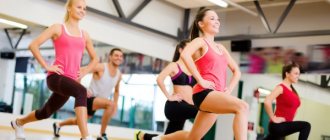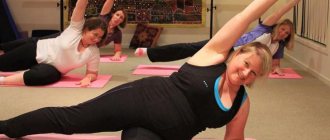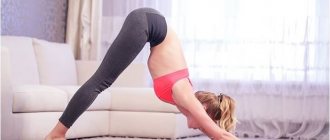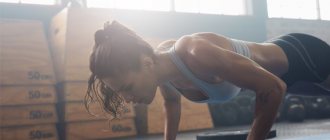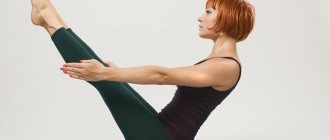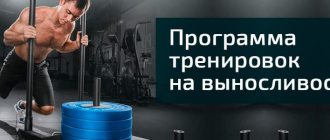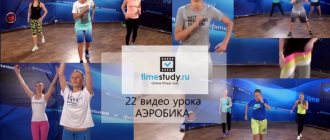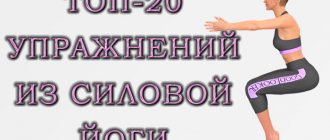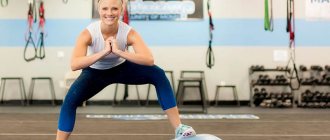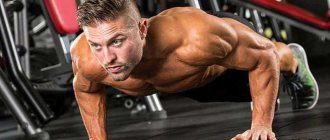Several decades ago, the fitness industry offered two main workout options for those concerned about the health and beauty of their body. Men pumped up their muscle mass with the help of weight training equipment, women visited fitness clubs and practiced group training, performing a set of exercises to stay in good shape.
Callanetics introduced a new approach to the physical healing of the body. In the 70s of the last century, former ballerina Callan Pinkney developed her own training system to relieve back pain. The new technique is based on elements from yoga and some ballet exercises.
Today, yoga is a popular fitness trend that is equally suitable for women and men. However, it has a number of contraindications. Callanetics is an alternative to traditional exercises and yoga asanas. Suitable for almost everyone, with a few exceptions.
Subsequently, this method gained recognition as an effective training method that does not require special training. Two or three classes a week will ensure a toned figure and good posture. No special equipment is required; the set of exercises can be performed at home.
What is callanetics?
Callanetics is a static type of fitness that combines elements of yoga and stretching. In essence, this is a system of low-intensity gymnastic exercises that works all muscle groups - even those that are often left behind in other workouts. We are talking about deep muscles, which are not easy to work on, but important. They are part of the “muscle corset” that holds the spine and internal organs in the correct position.
The goal of callanetics is to “build” a strong, fit and healthy body without gaining muscle mass. There are no sudden movements, jumping or weights - all the work is done with your own weight, and the movements are performed slowly and smoothly.
The training program consists of 29 exercises designed to keep the body in good shape and create a beautiful relief. Callanetics gives this effect through repeated repetitions of static poses that are held for one to two minutes. Remember the children's game “Freeze!”, where, at the “stop” signal, participants need to maintain a pose for a certain time. Few can last even a few seconds. In callanetics, the essence of the exercises is approximately the same - in theory, statics seem simple, but in reality it is not so.
Reviews
Alena, 27 years old
“I never thought that I was fat, but I would like to reduce my abdominal and hip area. I read reviews about callanetics that this system can reduce a specific area, and decided to try it. I started exercising every day, at first my muscles hurt, but after two weeks I noticed that some things became easier for me. The result was impressive, it’s amazingly simple, I continue my classes, I just started doing the complex twice a week to maintain my shape.”
Olga, 35 years old
“At my age, I manage to maintain a toned figure and excellent appearance, and I am often asked how I manage to do this. Most of my friends had heard about callanetics, but no one dared to put it into practice because they were not sure of the positive results. I became a clear example for them, I even had more energy, considering that I lead an inactive lifestyle. This system helped me, now I recommend it to everyone!”
Galina, 29 years old
“I decided to try the system before spring, I still want to appear renewed and slim after winter, wear beautiful dresses and skirts. I took a risk, worked out for a month, and as a result lost a lot of weight. I haven’t even lost as much weight as it is noticeable in my clothes. The muscles were tightened, the stomach was removed, the buttocks became elastic. There’s no need to diet, go to the gym, or spend money, it’s all just done at home!”
Gulnara, 22 years old
“I didn’t have a goal to lose weight, I’m happy with my weight. I worked out at home for a month, and the only results I can note are improved stretching and slightly toned muscles. I was previously involved in fitness, so this system did not impress me. It is more likely for beginners who are not in good physical shape and do not have the appropriate training. For me it’s not an option.”
vote
Article rating
Useful article? Rate it and add it to your bookmarks!
Who invented callanetics?
Callanetics got its name in honor of the former ballerina Callan Pinckney and the author of this technique. The direction appeared in 1984, when her book “Callanetics: 10 years younger in 10 hours” was published. What prompted the girl to create this technique?
Callanetics coach and fitness instructor for strength and functional training Nina Malysheva explains: “Callan had serious problems with her joints and back since childhood. Since childhood, she studied ballet and then yoga, and thanks to her perseverance and constant physical activity, she was able to get rid of constant pain.
She was the best advertisement for her own fitness method, with the help of which she not only brought her body into excellent shape, but also maintained it until her death in 2012.
The whole world started talking about this miracle gymnastics when the Duchess of York herself, the wife of Prince Andrew, became a fan of this movement. Using the technique, she was able to get her body in order in a short time. Callan personally helped her in this. After this, callanetics took a leading position in the fitness industry for a couple of decades.”
Time to study
When choosing a time for training, you should pay attention to your biological clock. According to experts, in the morning the body temperature is several degrees lower than normal. The warm-up should be more active, since unwarmed muscles can be easily damaged.
The best time for classes is from 10 a.m. to 2 p.m. It is during this period of time that the muscles respond best to the load.
In the evening, it is best to study between 16:00 and 19:00. After seven in the evening, activity decreases significantly.
What are the pros and cons of this direction?
Callanetics has many advantages - here are just some of them:
- does not require any special equipment - you only need a mat for the lesson;
- does not burden the cardiovascular system;
- does not cause hypoxia and pressure changes;
- does not require sudden movements and jumps;
- Suitable for any age and level of physical fitness;
- does not prohibit obese people from exercising.
There are practically no downsides to callanetics, but there are nuances, says callanetics coach Nina Malysheva:
- If you don’t stick to proper nutrition and skip classes, you shouldn’t expect much success;
- the body adapts very quickly to static conditions, so at some point progress may come to naught. In this case, callanetics should be alternated with other types of physical activity;
- What you shouldn’t expect from callanetics is an increase in muscle mass. Here the muscles only become stronger, but this type of training cannot add volume to, say, the gluteal muscles.
A tale about where legs grew from half a century ago
Callanetics was invented by an American named Callan Pinckney. More precisely, she did not invent it, but adapted yoga to her American needs. Real yoga is, first of all, a religion, but why do those who have long “dismissed God” and prefer to cope on their own need a religious background? Moreover, the God of the Hindus is alien, not Christian.
Callanetics appeared in the 60s, but its peak of popularity occurred in the seventies of the twentieth century. It gained fame thanks to good promotion - books, educational films, and everything - for good money... Already in the eighties it faded away, giving way to other directions.
Americans are big dreamers when it comes to losing weight; they, with their fast foods and hot dogs, are sorely lacking in this. They earned what they could in one “fashionable” direction and moved on to another. But several decades passed, and in 2012, at the age of 72, Mrs. Callan passed away. This served as a new impetus for the complex she developed: legal proceedings are still ongoing regarding who has the right to the trademark and name.
Is it possible to lose weight with callanetics?
There is no consensus on this matter. The creator of the technique herself claimed that 1 hour of callanetics provides a load comparable to 24 hours of aerobics. But in fact, one such activity burns approximately 250-390 calories, depending on the intensity of the activity. If you devote 3-4 days a week to such training, then, of course, you will be able to lose weight.
According to callanetics trainer Nina Malysheva, long-term static loads speed up metabolism. In this case, calories are burned even more actively than during high-intensity cyclic training, where exercises for different muscle groups alternate in a circle. Weight loss in callanetics occurs through isometric exercises, which keep the body in tension, and plyometric exercises, which are aimed at rapid stretching and contraction of muscles. It is easy to distinguish between them: in the first case, it is enough to stay in one position for a few seconds, in the second, perform any jumping exercise, for example, push-ups with clap.
Important Tips
In order for callanetics training to be beneficial for the body and not cause harm to health, you should adhere to the following rules:
- do those exercises that the muscles will allow you to perform, do not force an unprepared body to perform active loads;
- rest more often at the beginning of the lesson;
- if there is a feeling of fatigue, does not strive to set records and do 50 required repetitions, you can limit yourself to 20, but performed at full strength;
- when studying at home, carry out all actions in front of the mirror in order to see your own reflection and control the correctness of the process;
- do not strive to hold your breath, even during periods of maximum stress on the body;
- to fully supply the body with oxygen, you should breathe as usual, without speeding up or slowing down;
- practice in silence; if music is playing, there is a high risk of getting lost, adjusting the exercises and your own breathing to its tempo;
- do not be afraid of an unexpected weight gain, instead of losing it: sagging muscles, after full-fledged exercise, will be replaced by an increase in their strength, which leads to an increase in body weight (for the same reason, the volume of the abdomen may increase).
The decision to start practicing callanetics should not be spontaneous. Having taken it, a person is obliged to seek preliminary consultation with the doctor observing him and receive recommendations regarding the possibility of attending such training.
If necessary, undergo examinations to exclude possible somatic pathologies. This approach guarantees full results and high-quality muscle corset training.
Who is callanetics suitable for? And are there any contraindications?
Callanetics is suitable for those who want:
- improve metabolism and blood circulation;
- get rid of pain and discomfort in the back;
- lose weight;
- improve posture, mobility and joint flexibility;
- activate metabolism in the body;
- strengthen and tone muscles;
- learn to feel your body.
Despite the fact that callanetics mainly uses only static load, which is suitable even for beginners, there are still contraindications. Among them:
- cardiovascular diseases;
- postoperative period;
- recovery from serious injury;
- phlebeurysm;
- infectious diseases;
- bronchial asthma;
- haemorrhoids;
- serious vision problems.
“Callan Pinkney herself believed that there were no contraindications for her classes. Moreover, she used the technique to rehabilitate her own body. But it is still important to increase the load gradually and listen to your body. For those who have problems with the cardiovascular system, vision or spine, and who have recently suffered from an infectious disease, it is advisable to consult a doctor,” says Nina Malysheva.
Callanetics exercises for beginners
Before you begin the exercises, it is important to know one thing. In callanetics, as in yoga and Pilates, it is important to maintain tension throughout the entire exercise - without this, the exercise loses all meaning. After all, the value of callanetics lies precisely in the fact that by simultaneously tensing the maximum number of muscles, obtaining a load comparable to working with weights.
Callanetics trainer Nina Malysheva advises beginners to perform this set of exercises, before performing which they should do a warm-up (preferably a soft joint one, but any one will do):
1 exercise
1. Take the starting position: legs shoulder-width apart, feet parallel, body weight on the heels, knees slightly bent. We move our shoulders smoothly up, back and slightly down, stretch our neck up and maintain the tension between the shoulder blades. The chest moves forward. We twist the pelvis towards ourselves, we pull in the stomach. We feel the tension in the whole body from the knee to the shoulder, keep it throughout the entire exercise.
2. We move our arms to the sides, turn them palms up and perform small springy movements to bring the shoulder blades together.
3. We perform the movement for one minute and be sure to monitor the tension throughout the body, without leaving the starting position.
Exercise 2
1. We take the starting position from the first exercise.
2. Raise one arm up and slowly bend in the opposite direction, making sure that the hip remains in place and the lateral line of the body extends only from the hip. Having reached our maximum inclination, we stop and only by tensing the oblique muscle we straighten the body back.
3. Repeat this movement for a minute, observing how the oblique muscles of the working side stretch and tense.
Exercise 3
1. Stand facing a support (wall or pick up a bodybar). We stand on our toes and try to move our toes as far apart as possible so that our heels can touch. We bend our legs slightly at the knees, do a plié and try to hold on to the support with our fingertips, leaving all the weight on our legs. We twist the pelvis a little so that the lower back is level, without sagging.
2. We begin the squat by spreading our knees to the sides. When moving down we make three stops. While stopping, twist the pelvis as far forward as possible, tensing the gluteal muscles. Return the pelvis to a flat position.
3. We stop three times and twist the pelvis when moving down and three times when moving up.
Exercise 4
1. We take the starting position from the third exercise.
2. Start squatting.
3. Slowly go down and slowly go up. We repeat two or three times.
Exercise 5
1. Lie down on the mat. Knees bent. The supporting points of the body are the heels and lower back. Raise your head, shoulders, arms forward.
2. Twist your pelvis towards yourself and maintain this position throughout the entire exercise. We try to relax our neck as much as possible without drooping our shoulders. We look at the ceiling. We can place one palm under the back of the head and lower the head on it, relaxing the neck.
3. We begin to strain our abdominal muscles with springy movements and stretch our arms forward. We don’t lower our shoulders to the floor. Do it within a minute.
Exercise 6
1. Take the starting position from the fifth exercise.
2. Raise one leg towards you and perform springy twisting movements.
3. We direct our palms towards the feet. We perform the exercise for a minute.
Exercise 7
1. Take the starting position from the fifth exercise.
2. Raise both legs up, bend your knees exactly at an angle of 90 degrees.
3. Keep your shoulders suspended, direct your arms forward along your body and begin to slowly straighten your knees, lowering your legs down. Then we return it back. We make sure that the lower back does not come off the floor.
Exercise 8
1. Sit on the mat, bend your knees and lay them to one side.
2. We lean our hand on the mat, transfer our body weight to the same side and raise the second knee up.
3. We begin a small movement, moving the free knee back and returning it back. Do it within a minute. Repeat on the other leg.
Exercise 9
1. Sit on the mat, bend one leg in front of you, and extend the other straight to the side. In this position, we turn the pelvis towards the bent knee and turn the body in the opposite direction.
2. We turn the knee of the straight leg to the floor. We bring our hands in front of the body, lean on them and lift our straight leg off the floor.
3. Keep the leg suspended with small springy upward movements. Do it within a minute. Repeat on the other leg.
Exercise 10
1. Lie down on the mat on one side. We lean on the elbow perpendicular to the shoulder. We bend one leg and place it on the heel.
2. Straighten the other leg in front of you. We hold it in weight, twist the leg, aiming the toe towards the floor and the heel up. Raise your straight leg about 10-15 cm from the floor and make springy movements, feeling the tension on the inner thigh.
3. Do it for a minute. Repeat on the second leg.
Exercise 11
1. Sit on the mat on your knees. We raise our hands up, joining our palms.
2. Raise the pelvis above the heels and begin to move the pelvis: twist to the side, forward and in the other direction alternately.
3. We try to keep the pelvis closer to the heels (without lifting too much up). We perform the exercise for a minute.
Photo: Nina Malysheva; pexels.com/Ivan Samkov, Tim Samuel
How to practice at home correctly
At first it will be difficult to navigate, but this is a matter of habit. Therefore, keep before your eyes a visual aid on callanetics - videos from professional trainers or books with illustrations.
Necessary inventory and equipment
Chair. That's all the equipment needed for callanetics. For greater comfort, you can use a sports mat, but this is not necessary. There are no special restrictions on equipment: you will practice callanetics in sweatpants or an Eva costume, the main thing is that nothing hampers your movements. Although, as practice shows, new clothes can increase motivation. This rule usually works in callanetics.
Nutrition and supplements for training
I won’t tire of repeating: you need to eat often, but in small portions. Especially if you have thoroughly taken charge of yourself. After all, you need to get in shape not only your body, but also your stomach. So, we eat 5 times a day, drink a lot of water and green tea. By the way, I do not at all share the point of view that sweet black tea is from the clan of pests. I just recommend adding not sugar, but a teaspoon of honey - it’s good for you and your waist.
Directly what to eat:
- Oatmeal, muesli.
- Curd mass, milk, cottage cheese.
- Boiled eggs.
- Boiled chicken, beef and fish.
- Rice, beans, buckwheat.
These products should be frequent guests on your table. Much has already been said about the dangers of fried and smoked foods, I won’t repeat them.
Any additives in callanetics are completely optional; it is better to drink regular vitamin complexes and introduce more natural sources of nutrients into the menu. However, if you feel that you don’t have enough stamina, and you don’t intend to give up callanetics and reduce the time and amount of exercise, then you can drink a low-carb cocktail. Protein shakes are designed to speed up the “building” of muscles.
How to breathe correctly
Before starting each exercise in callanetics, you must exhale deeply, and during execution, breathing should be shallow. More attention is paid to exhalation, and the inhalation is very short. At the end, in a calm mode, we take a couple of breaths and immediately begin the next exercise.
Callanetics involves releasing the maximum amount of air from the lungs. In this case, you do not need to breathe more often or jerkily, try to do it gently. This way you will ensure the concentration of oxygen in the blood, tissues and organs.
Where to start first
Warm up. Believe me, this is very important. I have seen many limbs injured only because their owners were too lazy to warm up. There is a section on warm-up positions in callanetics, do not ignore it.
Number and duration of training
A lesson every other day is enough to get started. If, as a result, you come to the conclusion that you like such non-strength training and the loads are already easy to withstand, then you can train at least every day.
The duration of a callanetics lesson is 1 hour, and the best part is that this hour can be divided into two halves - morning and evening.
What time to train
Be guided by your feelings. Morning exercises give you a boost of energy, and evening callanetics relieves you of the heaviness accumulated during the day. But in your case it may be the other way around. Try doing callanetics a little in the morning and a little in the evening.
Read also
- What is aerostretching and how is it better than regular stretching? How to prepare for your first lesson?
- Flowing: what is it, the history of its appearance, a set of exercises for beginners
- Shaping: what is it and what is the essence of training, the difference from fitness, video lessons for beginners
- Tabata workouts for beginners
- Functional training - what is it and what exercises does it include?
- Plyometric exercises for all levels

